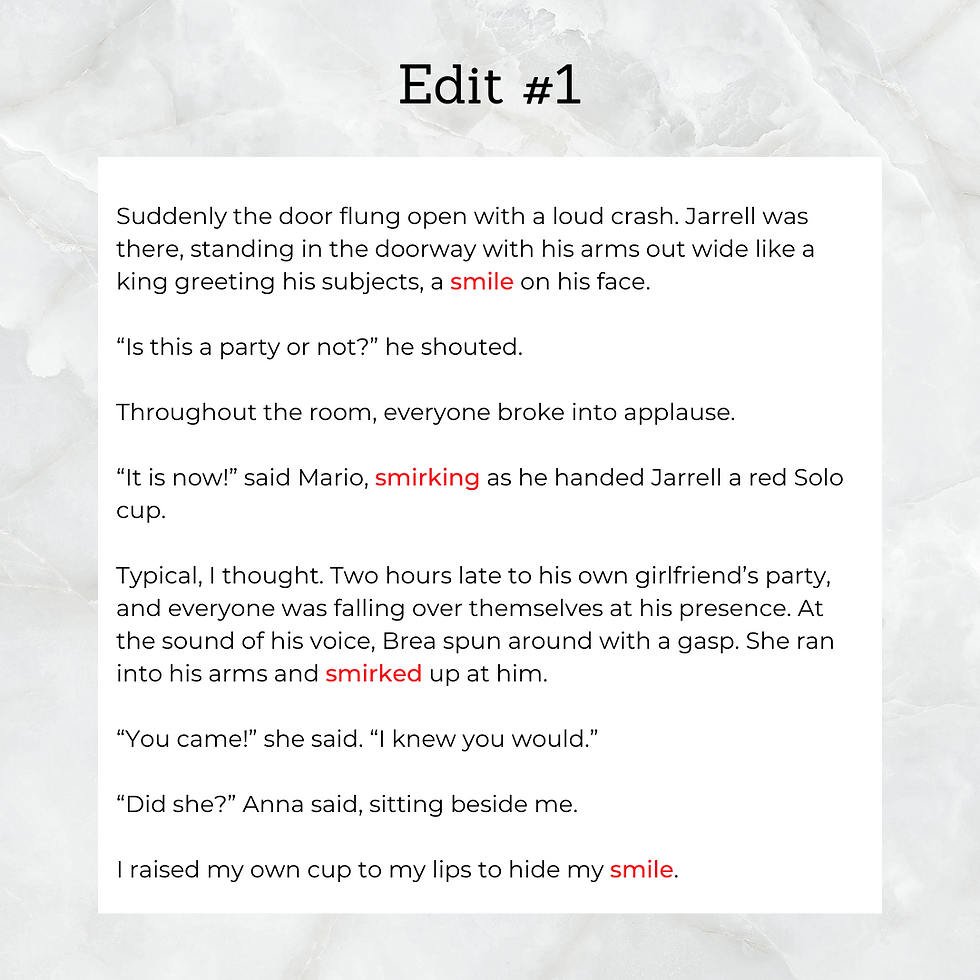How to Use a Thesaurus to Level-Up Your Writing
- Q
- Sep 1, 2021
- 4 min read
How many times have you been writing and suddenly stopped to look up a word? Like, you’re in the flow of the story, and then you realize you’ve used the word “smiled” twelve times so far. The easiest thing to do is go to the thesaurus, look up synonyms, and replace your “smiled” with something else.

We’ve all done it and thought our writing better for it. But does using a thesaurus really help your writing? Yes! But not unless you’re careful.
Dictionaries and thesauruses are amazing tools that not only help us find the perfect word, but also help us expand our vocabulary and learn to be precise in our descriptions. But like with any tool in our toolbox, it’s important to know how what each tool does and how to use it. That way, you can build the strongest story possible.
Real quick—we’ll start with what each of these tools does. Dictionaries help us define words that we’re unfamiliar with or need clarity on. Thesauruses function the same way—they help us define words—but from a different perspective. Rather than give you a long definition of a word, a thesaurus helps you understand the word by showing you other words that are either similar in meaning or opposite. While you’re writing, you’re much more likely to use a thesaurus than a dictionary.
Okay, now how should we as writers be using the thesaurus? The key to using a thesaurus is to remember that it’s showing you words that are similar in meaning, not the same. Words are not always interchangeable—and that’s a good thing! For example, let’s look at the word “smile.” Take a look at this sample section I might have written:

That’s a lot of smiling, isn’t it? To change it, you might think to look up some similar words in a thesaurus. You’d find: grin, beam, laugh, and smirk. Now that you have them, can you just replace a few “smiles” with these other options? No! Because these similar words are not exact replacements.
The next step to using a thesaurus is making sure you know the definition of every word you’re using. This is where a lot of writers get tripped up. Especially first-time writers. The four synonyms we’ve come up with have 4 distinct meanings. A grin might be used to describe a deeper smile, one with more amusement. If someone “beams” think of light shining out of a person’s face and eyes. A “beam” is a bigger smile, maybe even with teeth. A smirk is like a one-sided smile where the lips are slanted. Someone who’s smirking may be trying to hide their smile or trying not to laugh. A smirk might also imply a joke, but can have a negative connotation. And we all know what a laugh is.
Without recognizing these difference, many writers take synonyms like this and plop them into their text. So, if we chose “smirk” as a replacement (because maybe it sounds a little fancy) our section might read like this:

That just changed the meaning of our section. Now, readers might think that Mario is smirking (not smiling) because maybe he knows something about why Jarrell didn’t come earlier. But then that might not make sense because the narrator says everyone was falling over Jarrell. Brea is smirking now too, and that changes her interaction with her boyfriend. Now it seems like maybe Jarrell played a prank on her and told her he wasn’t coming, only to surprise her. But does that match with the narrator’s reaction to Jarrell and her annoyance? Does it match with Anna’s comment, which hints that Brea was complaining before this? Everyone else is smirking, but the narrator is left smiling behind her cup. Does it make sense for her to smile if she’s not happy with Jarrell?
If you try this example again, paying attention to the definitions of the words we found in the thesaurus, we can get something more like this:

Now we’ve got Jarrell smiling as he strides into the party. Mario’s got an even bigger smile on his face and maybe is excited like everyone else with his grin. Brea is happy to see her boyfriend and maybe starstruck like everyone else—so she’s beaming brightly. And finally, our narrator is smirking at the comment made by Anna and needs to hide her face behind her cup. Edit #2 has the flavor we wanted to bring to the sample section, but takes into account how each word choice might function best in the story. Also, by working with precise words, we take out a little of the repetition from the sample section. Because the thesaurus synonyms are similar, not the same.
Choosing the right words with the right meanings helps us set the tone, build tension, create our characters’ voices, and pull our readers into our stories. Playing around with words is great, but you have to make sure you know the meaning of every word you’re working with. Every Single. One. So, next time you’re searching through a thesaurus, looking for the right word, remember to click on the word and read through the definition. Check that definition against what you’re trying to say. Make sure that word is really working with you, the way you need it to.
Comments